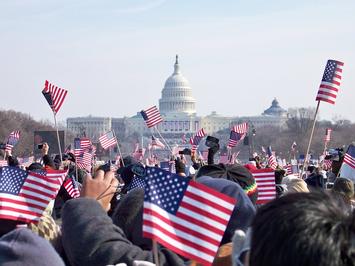Since the end of the Second World War, middle- and working-class people across the Western world have sought out—and, more often than not, achieved—their aspirations. These usually included a stable income, a home, a family, and the prospect of a comfortable retirement. However, from Sydney to San Francisco, this aspiration is rapidly fading as a result of a changing economy, soaring land costs, and a regulatory regime, all of which combine to make it increasingly difficult for the new generation to achieve a lifestyle like that enjoyed by their parents. This generational gap between aspiration and disappointment could define our demographic, political, and social future.
In the United States, about 90 percent of children born in 1940 grew up to experience higher incomes than their parents, according to researchers at the Equality of Opportunity Project. That figure dropped to only 50 percentof those born in the 1980s. The US Census bureau estimates that, even when working full-time, people in their late twenties and early thirties earn $2000 less in real dollars than the same age cohort in 1980. More than 20 percent of people aged 18 to 34 live in poverty, up from 14 percent in 1980. Three-quarters of American adults today predict their child will not grow up to be better-off than they are, according to Pew.
These sentiments are even more pronounced in France, Britain, Spain, Italy, and Germany. In Japan, a remarkable three-quarters of those polled said they believe things will be worse for the next generation. Even in China, many young people face a troubling future; in 2017, eight million graduates entered the job market, but most ended up with salaries that could have been attained by going to work in a factory straight out of high school.
Undermining of Home Ownership
Few metrics demonstrate the end of aspiration better than the decline in home ownership. The parents and grandparents of the millennial generation (born between 1982 and 2002) witnessed a dramatic rise in homeownership; in contrast, by 2016, home ownership among older millennials (25-34) had dropped by 18 percent from 45.4 percent in 2000 to 37 percent in 2016. Without a home, these millennials will face a “formidable challenge” in boosting their net worth. Property remains central to financial security: Homes today account for roughly two-thirds of the wealth of middle-income Americans; home owners have a median net worth more than 40 times that of renters.
Perhaps nowhere is shift more dramatic than in Australia, a country long renowned for both social mobility and widespread home ownership. Between 1981 and 2016, property ownership rates among 25 to 34 year-olds in Australia—a country with a strong tradition of middle- and working-class home ownership—fell from more than 60 percent to 45 percent. This is not, as some suggest, the result of a lack of developable land. Even in the relatively crowded United Kingdom, only six percent of the land is urbanized, while barely three percent of the US and 2.1 percent in Canada is urbanized. It’s less than 0.3 percent of Australia
So why has home ownership fallen? Largely due to regulations that have placed new affordable housing beyond the reach of younger Australians, something we also see in major cities in Great Britain, the United States, and Canada. In all these places, the main culprit has been “smart growth,” a notion that encourages the reluctant to move closer to dense urban cores and give up the dream of owning a home.
As a result, Australia’s once affordable cities are now among the world’s most expensive. According to demographer Wendell Cox, prices for homes in Sydney—even in the current downturn—are higher than Los Angeles, London, New York, Singapore, and Washington. These all are cities that by any estimate are more critical in the world economy and far more land constrained. Even Adelaide, an isolated and declining industrial hub, has higher prices based on income than Seattle, one of the world’s most dynamic tech hubs.
The impact on prices has been severe. In Sydney, planning regulations, according to a recent Reserve Bank study, now add 55 percent to the price of a home. In Perth, Melbourne, and Brisbane the impact is also well over $100,000 per house. Australian cities once filled with family-friendly neighborhoods are now dominated by dense apartments. According to projections from the Urban Taskforce, apartments will make up half of Sydney’s dwellings by the mid-century, whereas only one quarter of Sydney dwellings will be family-friendly detached homes.
The impact on prices has been severe. In Sydney, planning regulations, according to a recent Reserve Bank study, now add 55 percent to the price of a home. In Perth, Melbourne, and Brisbane the impact is also well over $100,000 per house. Australian cities once filled with family-friendly neighborhoods are now dominated by dense apartments. According to projections from the Urban Taskforce, apartments will make up half of Sydney’s dwellings by the mid-century, whereas only one quarter of Sydney dwellings will be family-friendly detached homes.
These policies are widely supported among planners, academics, and the media; in virtually all countries, the cognitive elites congregate in elite urban centres. Indeed, when I produced data at a recent convention demonstrating that most Australians are continuing to move to the periphery, even in New South Wales, the moderator, Australian Broadcast commentator Ali Moore, described much of suburbia as “the wastelands.” This led one attendee to wonder “what country” she inhabited, given that 80 percent of all Australians live in suburbs, with more than four-fifths of families preferring to live in single family homes.
The Green Agenda
Historically, opposition to suburban lifestyles was based largely on aesthetic, social, or even economic considerations. Today, opponents are preoccupied with “green” and “sustainability” concerns. The environmental magazine Grist envisioned “a hero generation” that will escape the material trap of suburban living and work that engulfed their parents. One magazine editor proudly declared herself to be a part of the GINK generation (as in “green inclinations, no kids”) which not only afforded her a relatively care-free and low-cost adult life, but also “a lot of green good that comes from bringing fewer beings onto a polluted and crowded planet.”
This view is widely shared by both the oligarchy and the upper echelons of the planning clerisy. Like their medieval counterparts, they wish to see a more “ordered” planet, but in ways that do not threaten their own power or quality of life. Those at the top of class pyramid can purchase “indulgences” for their consumption by investing in forests, driving electric cars, solarizing their homes, while their wealth allows them to purchase expensive inner-city flats.
This meme is applauded by publications like the Australian Financial Review, which insist that millennials do not want to live in suburbia. This is largely specious. In survey after survey, most millennials, in the United States and elsewhere, hope to buy a single-family house. The problem is simply that they can’t afford them, particularly in the highly regulated regions as in California, Australia, Canada, or the UK.
This sets a stage for a future political conflict. Even in the teeth of policies that seek to discourage suburban growth, in most high-income countries, including Canada, Australia, and the US, suburban tastes remain predominant, and are likely to become more so. In America, among those under 35 who do buy homes, four-fifths choose single-family detached houses. According to a recent National Homebuilders Association report, over 66 percent, including those living in cities, actually prefer in the future to purchase a house in the suburbs.
From Upward Mobility to Neo-Feudalism
The drive against bourgeois aspirations underpins an emerging neo-feudal system in which people remain renters for life, enjoying their video games or houseplants. This may end the dream of ownership that has defined the middle class for a half millennium, but it could assure a steady profit for the owner class, a rent that would seem appropriate to a medieval landlord.
French economist Thomas Picketty has suggested that today’s ageing societies exacerbate this pattern. Older people dominate the stock and property assets, forcing up prices to the point that younger generations or newcomers to these countries face growing obstacles to upward mobility. High rents as well as rising house prices make the extension of property ownership increasingly difficult for all but inheritors.
This receding horizon is generating an ever more feudalistic mentality among the young—those with wealthy parents are far luckier to own a house and enter what one writer calls “the funnel of privilege.” In America—like Australia, a country whose mythology disdains the power of inherited wealth—millennials are increasingly counting on inheritance for their retirement at a rate three times that of the boomers. Among the youngest cohort, those aged 18 to 22, over 60 percent see inheritance as their primary source of wealth as they age.
A Return to Bourgeois Aspiration
“Young people,” wrote Montesquieu in the mid-eighteenth century, “do not degenerate; this only occurs only after grown men have become corrupt.” By endorsing policies that restrict suburban development and home ownership, planners, investors, and the media are asking the next generation to accept conditions that their predecessors would never have tolerated.
Ultimately, this poses a threat to the powerful democratic ideal that arose in the second half of the last century. Instead of spreading the wealth, many of the leading Silicon Valley oligarchs’ solution to marginalization is to have the state provide housing subsidies as well as unconditional cash stipends to keep the peasants from rising against their betters.
The oligarchs understandably do not want a populist rebellion from below; the Trump victory and Brexit were demonstrations of that threat. But nor do they worry all that much about being burdened by a call for societal generosity. Such people tend to be skilled at tax avoidance, so they won’t be picking up the bill. Instead, as occurred in the Middle Ages, the taxes will be paid by the remaining middle- and working-class residents, while the regulatory clerisy, both in government and the universities, enjoy cushy pensions and other protections unavailable to the masses.
The erosion of upward mobility threatens a deepening conflict between the middle orders and the elites. It also threatens the future of liberal democracy. A strong landowning middle order has been essential in democracies from ancient Athens and the Roman and Dutch Republics to contemporary Europe, North America, and Australia. Now with fewer owning land, and many without even a reasonable expectation of acquiring it, we may be entering an era portrayed as progressive and multicultural but that will be ever more feudal in its economic and social form.
Joel Kotkin is a Presidential Fellow in Urban Futures at Chapman University and Executive Director for the Center for Opportunity Urbanism. His next book, On the Return of Feudalism, will be out early next year from St. Martin’s.



 A steel worker returns to work at U.S. Steel Granite City Works in Granite City, Ill. (Lawrence Bryant/Reuters)
A steel worker returns to work at U.S. Steel Granite City Works in Granite City, Ill. (Lawrence Bryant/Reuters)




